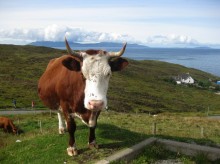 Here is the section ‘Overcoming Stigma’ in my article Factors That Facilitate Addiction Recovery on this website. I have followed it with links to various of my blog posts relating to other people’s work on stigma which I have featured on this website. I hope you find this content of interest and help.
Here is the section ‘Overcoming Stigma’ in my article Factors That Facilitate Addiction Recovery on this website. I have followed it with links to various of my blog posts relating to other people’s work on stigma which I have featured on this website. I hope you find this content of interest and help.
‘Stigma can be defined as social disapproval of personal characteristics, actions or beliefs that go against the cultural norm. It can occur at a variety of levels in society, i.e. individuals, groups, organisations and systems. A person can be labelled by their problem (e.g. addiction to drugs and/or alcohol) and they are no longer seen as an individual, but as part of a stereotyped group, e.g. a ‘junkie’, ‘alkie’, etc. Negative attitudes and beliefs toward this group create prejudice which leads to negative actions and discrimination.
For example, people addicted to heroin are often considered to be carriers of hepatitis C and other blood-borne viruses, thieves who rob old ladies of their handbags, and dirty, weak-willed junkies who will never get over their problems.
‘Once a junkie, always a junkie’ is a saying I’ve even heard in discussions amongst drug treatment agency workers. Our Wired In research has not only shown the strong prejudice that exists towards heroin users, but also towards recovering heroin addicts.

 Here’s another great blog from one of my favourite psychiatrists,
Here’s another great blog from one of my favourite psychiatrists,  Here is a powerful
Here is a powerful 
 In an earlier series of blog posts starting
In an earlier series of blog posts starting  Yesterday, I was going through old Recovery Stories blogs (from the period 2013/4) when I came across this gem. It’s a guest blog by a GP who gives a personal view on professional perspectives of mutual aid. No doubt, it is just as relevant today as it was then.
Yesterday, I was going through old Recovery Stories blogs (from the period 2013/4) when I came across this gem. It’s a guest blog by a GP who gives a personal view on professional perspectives of mutual aid. No doubt, it is just as relevant today as it was then. As part of our Wired In strategy, my colleagues and I launched the Wired In To Recovery online community in November 2008. Our initial aims with Wired In To Recovery were to:
As part of our Wired In strategy, my colleagues and I launched the Wired In To Recovery online community in November 2008. Our initial aims with Wired In To Recovery were to: In my third blog post focusing on what I learnt from the treatment agency BAC O’Connor back in 2004, I focus on two themes. Firstly, how staff deal with people who relapse during the treatment programme. Secondly, how the agency works with ‘clients’ to help them integrate (back) into their community.
In my third blog post focusing on what I learnt from the treatment agency BAC O’Connor back in 2004, I focus on two themes. Firstly, how staff deal with people who relapse during the treatment programme. Secondly, how the agency works with ‘clients’ to help them integrate (back) into their community. This is eighth post in this particular Series, which comes from my book
This is eighth post in this particular Series, which comes from my book  When I developed Wired In and worked in the addiction recovery field, I was living in South Wales. When my daughter Annalie was in medical school in Edinburgh, I used to fly up from Cardiff to visit her. I soon came to love Edinburgh. That positive feeling for the city increased greatly when I met Dr David McCartney.
When I developed Wired In and worked in the addiction recovery field, I was living in South Wales. When my daughter Annalie was in medical school in Edinburgh, I used to fly up from Cardiff to visit her. I soon came to love Edinburgh. That positive feeling for the city increased greatly when I met Dr David McCartney.





